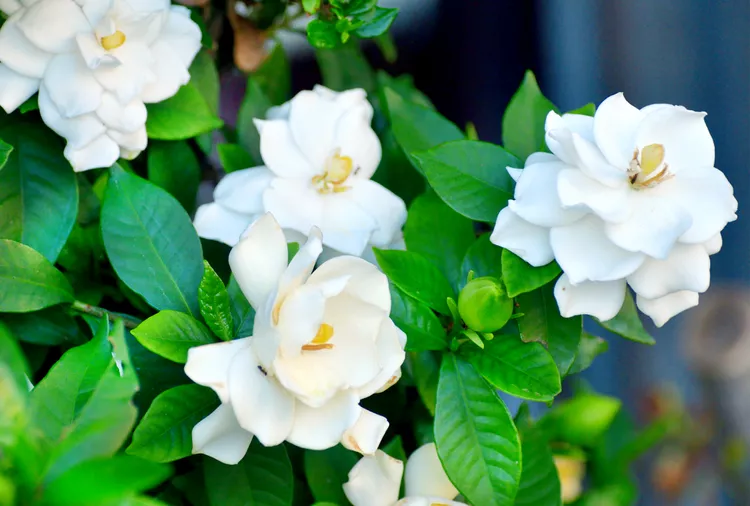A gardenia shrub's waxy white flowers fill the air with a scent that makes you want to breathe it in deeply for hours, and wish every month of the year could be June. One essential key for getting a gardenia to bloom profusely is providing plenty of plant nutrients, which means applying gardenia fertilizer at the right times and in the right amounts.
When cared for correctly, a gardenia plant can be covered in blooms for two months in early summer and then may bloom sporadically until fall. Here’s how and when to use gardenia fertilizer to keep those fragrant flowers coming.
1. Fertilize after the last frost.
Gardenias are the hungry hungry hippos of blooming shrubs. They need lots of iron and magnesium. Fertilize them in the spring after your area's last frost date to give them a shot of nutrients to wake them from their dormant winter season—think of it like a hearty breakfast for gardenias. Use a fertilizer with an N-P-K nutrient ratio of 2-1-1 on gardenias, following the product instructions. Fertilizers formulated for azaleas, camellias, and rhododendrons are ideal for gardenias, too.
2. Fertilize again six weeks later.
To encourage those blooms to keep coming, fertilize gardenias a second time six weeks after that initial early spring meal using a fertilizer with low nitrogen content so it is not likely to burn the gardenia roots. Mix it gently into the soil around the base of the shrub.
Add a layer of mulch around gardenias in your garden to keep nutrients and moisture in the soil and heat off the roots.
3. Feed the soil with organic amendments.
Add nutrients to the soil by putting a layer of garden compost or aged cow manure under a gardenia shrub every two months from spring to fall. You don’t need cows or a compost bin to do this; you can buy bags of this stuff at just about any garden center. Apply a 1- to 2-inch-deep layer of the organic material around the base of the shrub. Don’t dig it into the soil or you might disturb the gardenia’s roots. Worms and soil organisms will move the compost and its nutrients into the soil.
Prune gardenia shrubs after they have finished flowering in the summer to remove spent flowers and straggly branches.
4. Add an iron supplement if leaves start to yellow.
If a gardenia shrub’s leaves turn yellow, that may mean your plant has an iron deficiency, causing a condition called chlorosis. It’s like anemia for plants. An anemic gardenia won’t bloom well and may not bloom at all. Apply a product like Iron-Tone, Ironite, or Fertilome Chelated Liquid Iron to the soil. Check your soil pH, too. A pH over 7 can cause gardenia leaves to turn yellow.
5. Don’t fertilize gardenias in the fall or winter.
Fertilizing gardenias in the fall, when they are about to go dormant, or in the winter, when they are dormant, is bad for the plant. Fertilizing gardenias in the fall causes them to put on new growth, which may be killed when the first freeze hits. In the winter, gardenias are essentially asleep and not actively growing, so they don’t need any nutrients. If you fertilize in the dead of winter, the gardenia fertilizer may damage the shrub’s roots.
Additional Tips for Boosting Gardenia Flowers
Besides providing adequate nutrients to your gardenia, you must also meet the plant’s basic growing needs to keep it blooming well. Gardenias need rich, well-drained soil that is acidic (pH of less than 6.0), protection from the afternoon sun in hot climates, and consistent moisture. A healthy gardenia growing in ideal conditions will produce the most flowers for you, so do all you can to keep your plants happy.




















